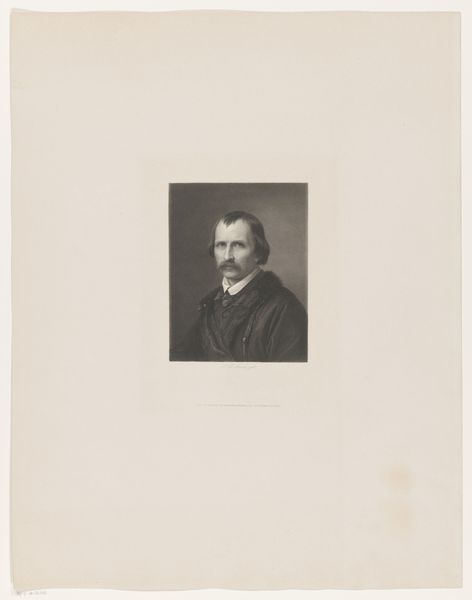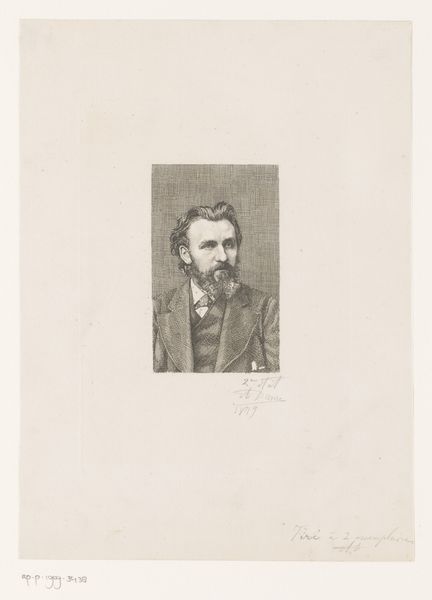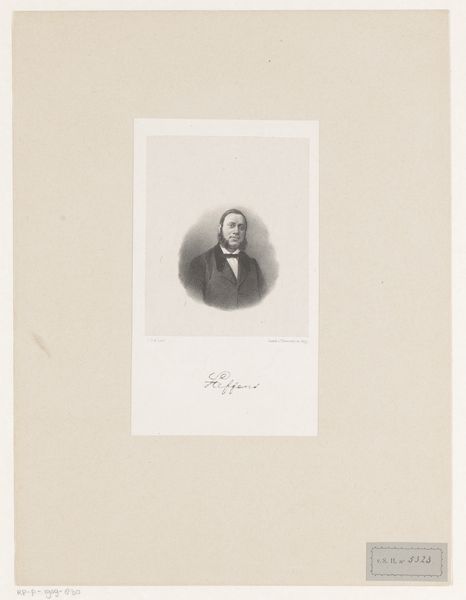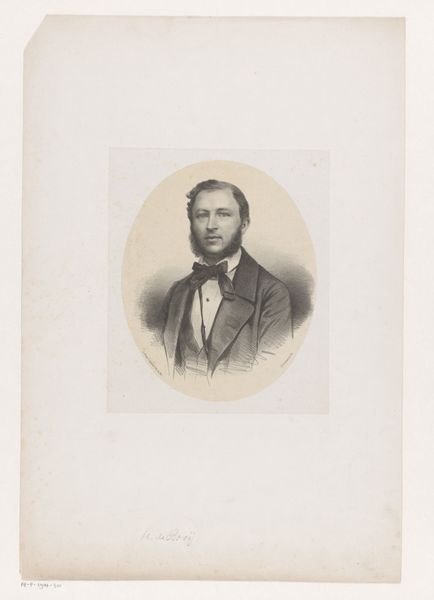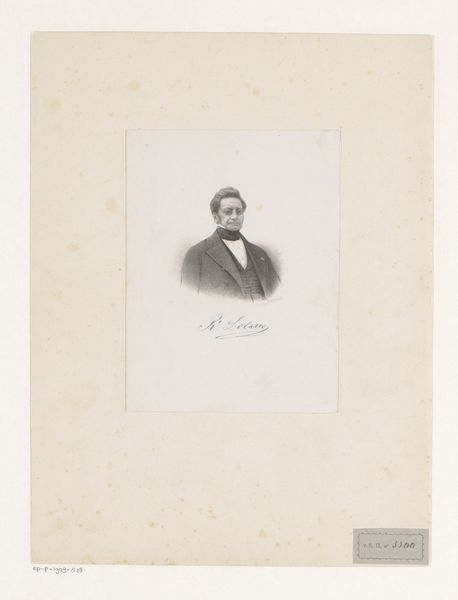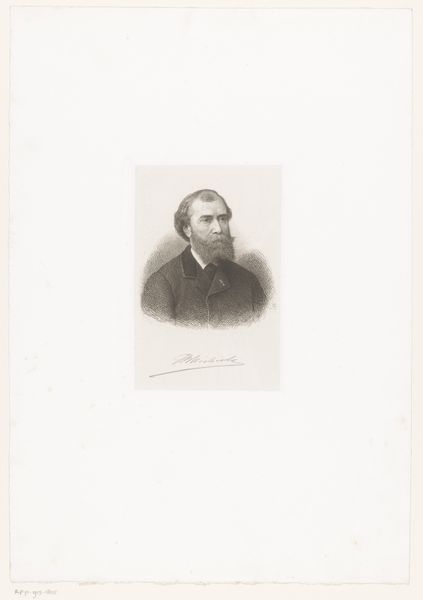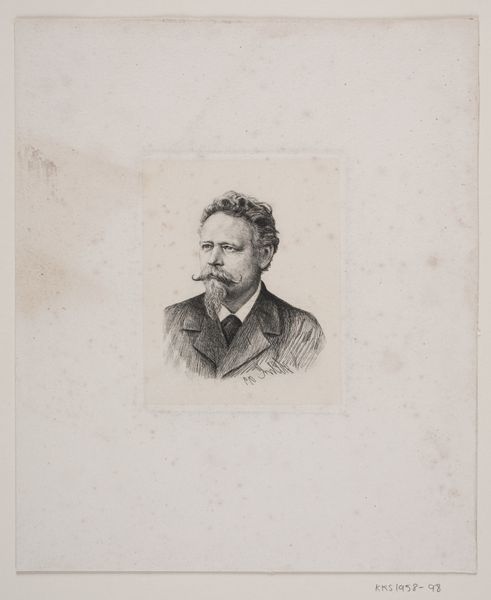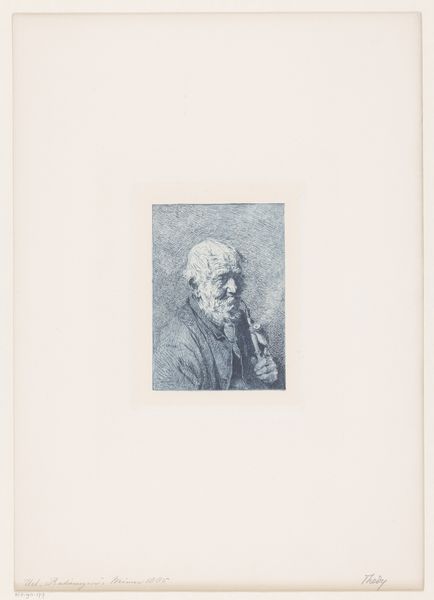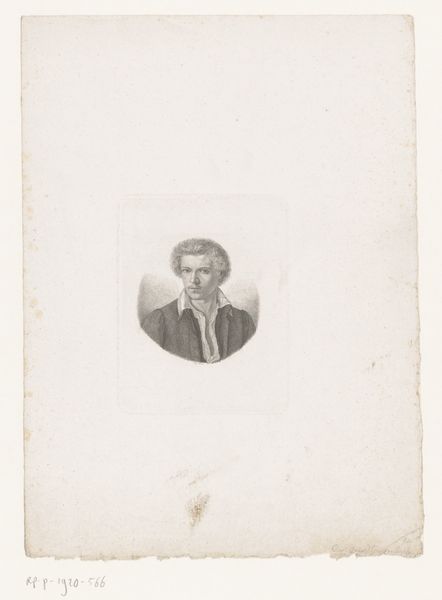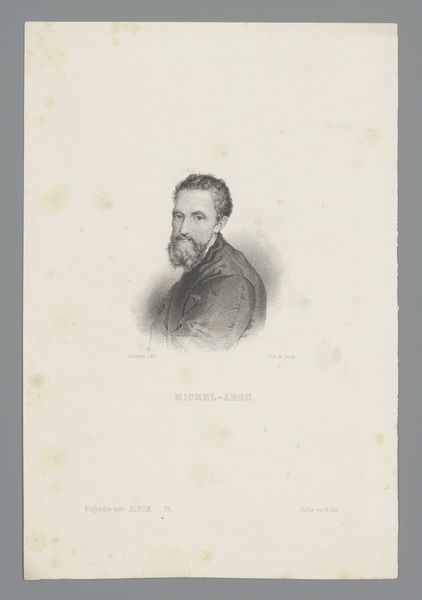
Dimensions: 116 mm (height) x 88 mm (width) (plademaal)
Curator: Welcome. Here we have "Nansen," an etching by John Lübschitz, created in 1899. Editor: It strikes me as somber. The stark lines and subdued tones definitely convey a sense of gravity. The heavy paper, the fine line of the etching - all of this production lends the image a lot of authority, strangely enough. Curator: Absolutely. And think about Fridtjof Nansen himself. This portrait captures the famous explorer and scientist, a figure synonymous with perseverance and the conquering of the Arctic. Lübschitz clearly intended to link the image to notions of Nordic heroism. The darkness you're observing seems to almost echo the unexplored icy landscapes Nansen faced. Editor: Right, but an etching like this isn’t just inspiration. There's a whole process: the metal plate, the acid, the inking. How do you make a process like that evoke this stoic figure? And thinking of materials, the paper itself is such a huge component, yet almost unacknowledged. Curator: The symbolic work comes through not only in subject and visual representation but also the inherent symbolic value in these very material qualities of the portrait. The use of etching emphasizes the precise and deliberate nature of Nansen’s endeavors. The very production of the portrait mimics his method. Editor: So the care put into this specific etching, it’s trying to parallel something inherent to this person. But how does that relate to broader consumption? It's a portrait of Nansen, not Nansen himself facing the Arctic, which begs a question, what's the product here, or who is? Curator: That's a really important question. Maybe Lübschitz is producing Nansen as a symbol to be consumed—of strength and bravery and commitment. This is then tied back to what qualities are then projected onto, or hoped for in, the portrait’s owners and viewers. Editor: It makes one appreciate that the portrait as an object—with paper, ink, and skill — is something distinct from, though in the service of, this projection. Curator: Indeed, a reminder that both image and material serve as conduits for meaning. Editor: Absolutely. Seeing that relationship definitely deepens the experience of the image itself.
Comments
No comments
Be the first to comment and join the conversation on the ultimate creative platform.
